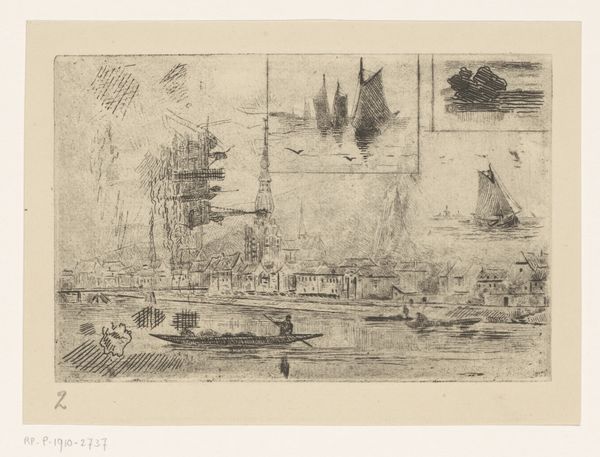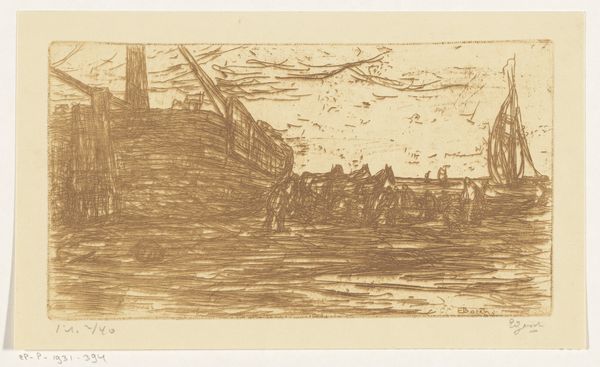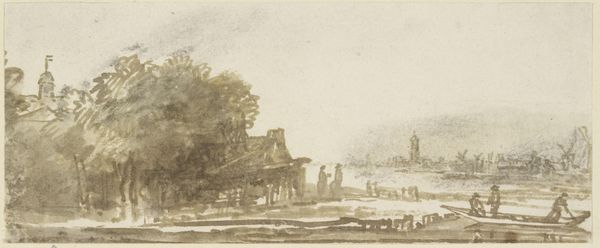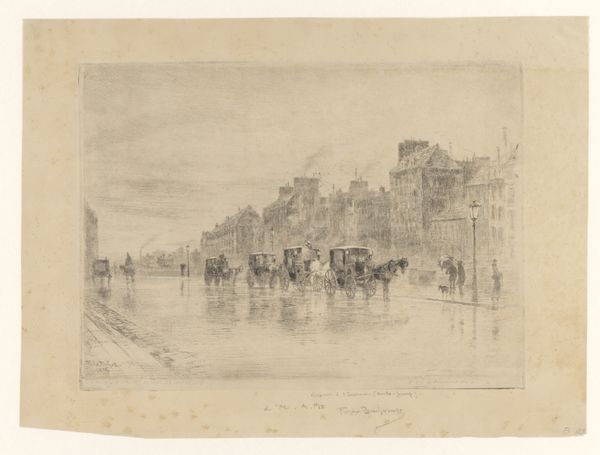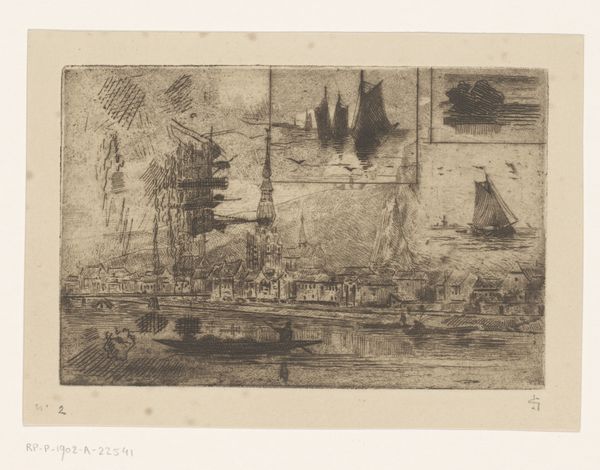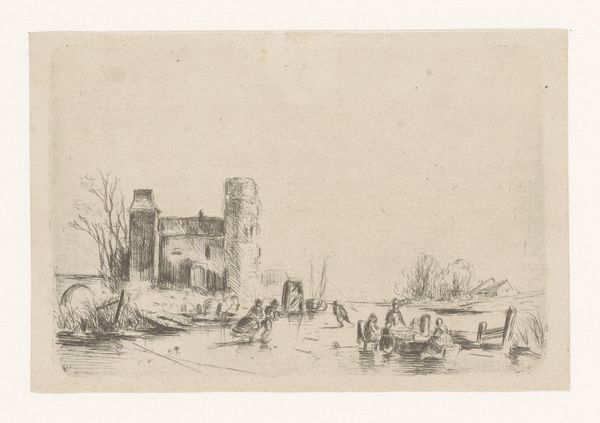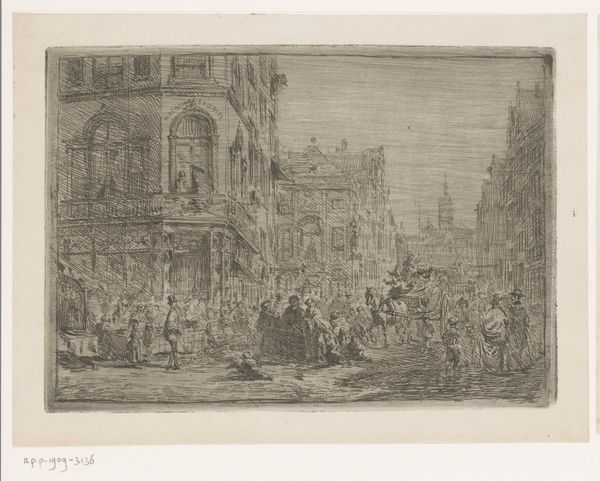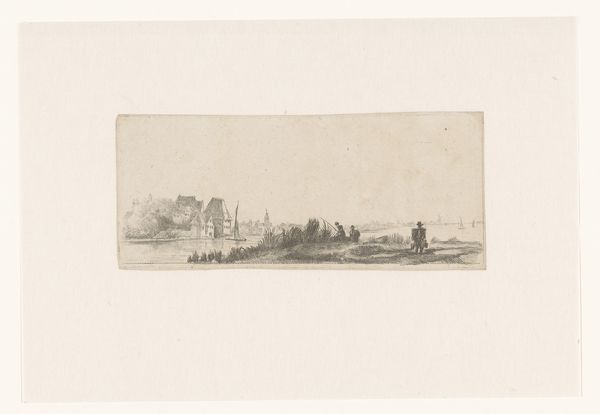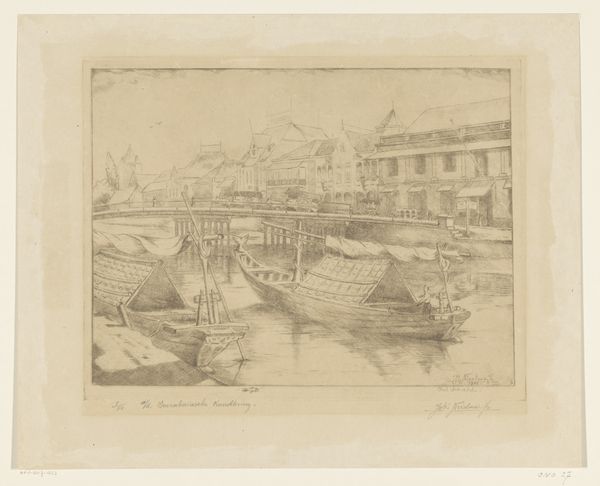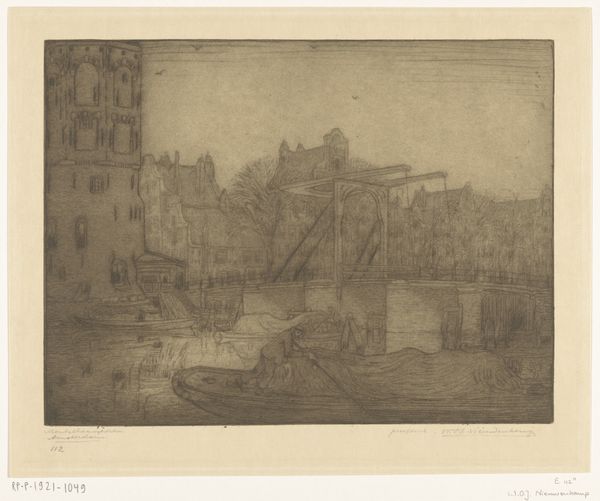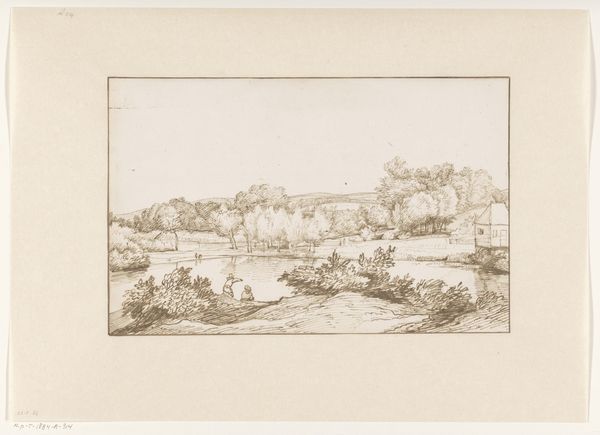
print, etching
# print
#
etching
#
old engraving style
#
etching
#
cityscape
#
realism
Dimensions: height 109 mm, width 210 mm, height 134 mm, width 234 mm
Copyright: Rijks Museum: Open Domain
Curator: What a wonderfully busy scene, Editor. This is "Piazza de Montanara, Rome," an etching by Etienne Bosch, likely created before 1931. Editor: Yes, the dynamism is immediately striking. I'm drawn to the somewhat blurred effect, conveying the bustling atmosphere. Curator: Let's consider Bosch's medium and process. Etching allows for intricate detail and texture. He's used a metal plate, likely copper, coating it with wax and then scratching through the wax to expose the metal. The plate is then submerged in acid, which bites into the exposed lines, creating grooves that hold ink. Editor: Absolutely. The act of etching becomes crucial here, it is not just about capturing the image but also understanding the economic context. Rome in that period experienced extensive construction and demolition. Etchings, as reproducible prints, would have served to record scenes of urban change accessible to a wider, possibly more politically aware, public. Who were the audiences? How did this imagery potentially serve or challenge existing power structures? Curator: That's a compelling point. Considering its distribution would illuminate Bosch’s purpose and the social life of this print. I am curious what was Bosch relationship with printmaking. Did he consider his works purely decorative or did he ascribe more function than simple recording to these scenes. Editor: There’s also a narrative aspect here, isn't it? The buildings seem temporary; there's a strong implication of movement and transition and how these places can tell stories about the population that is moving through it. Curator: You're right. And considering how it's made available through the mass production capability inherent in prints opens fascinating avenues to analyze how that reality reaches the audience. Editor: I completely agree. This unassuming little etching offers a wealth of social and material context for inquiry. Curator: A valuable perspective; thanks for broadening my view of this work beyond simply technique and artistic production. Editor: My pleasure. It reminds us that even the smallest print carries layers of stories about who we are, where we have been and what we do.
Comments
No comments
Be the first to comment and join the conversation on the ultimate creative platform.

